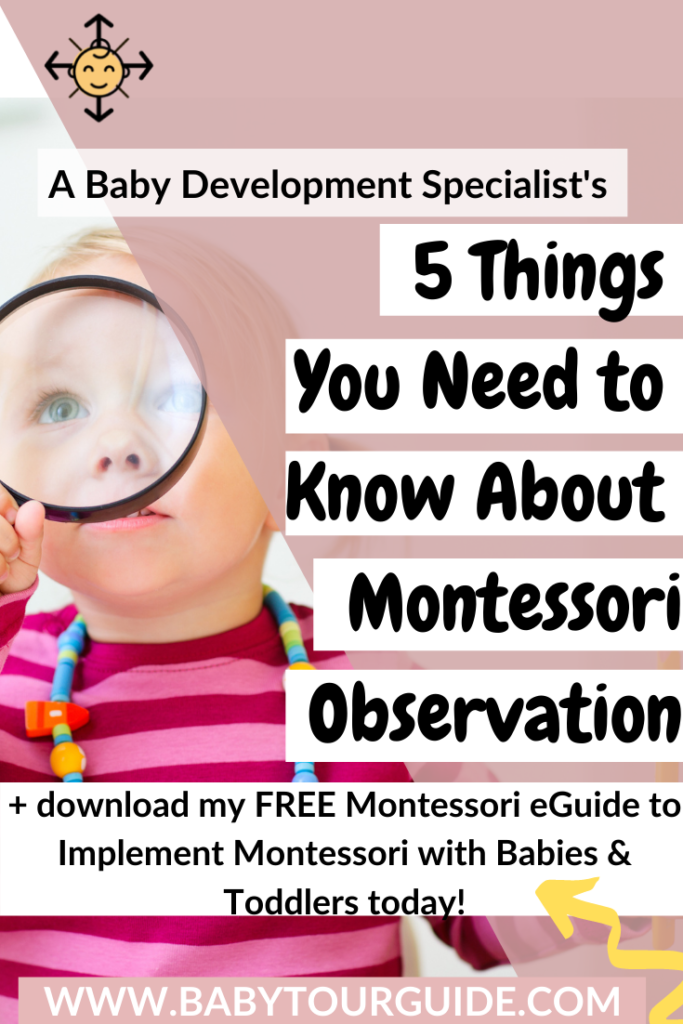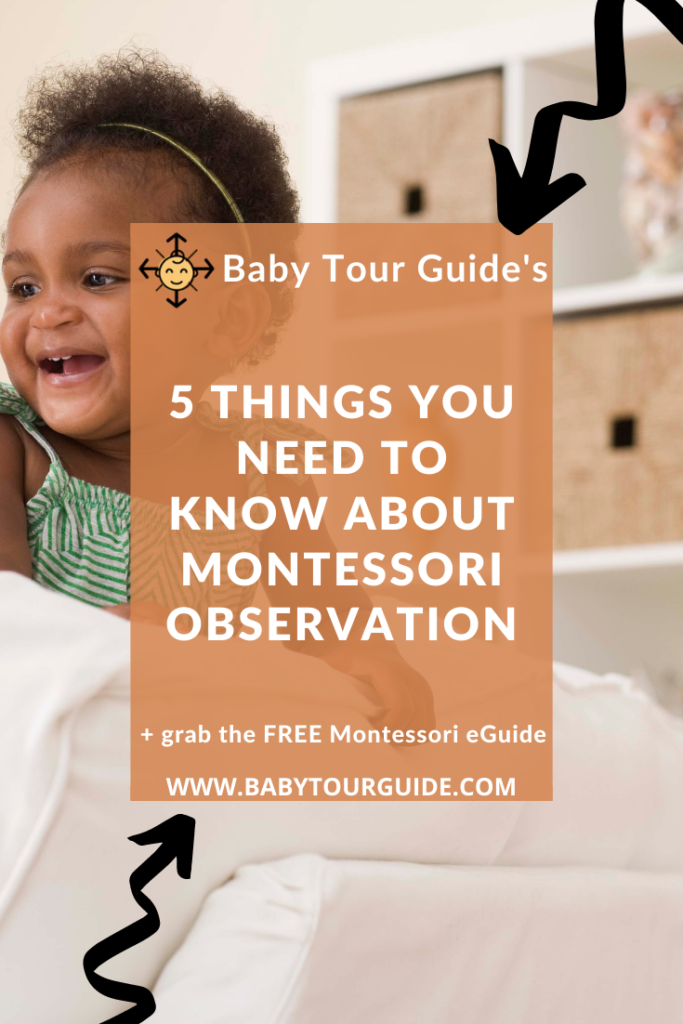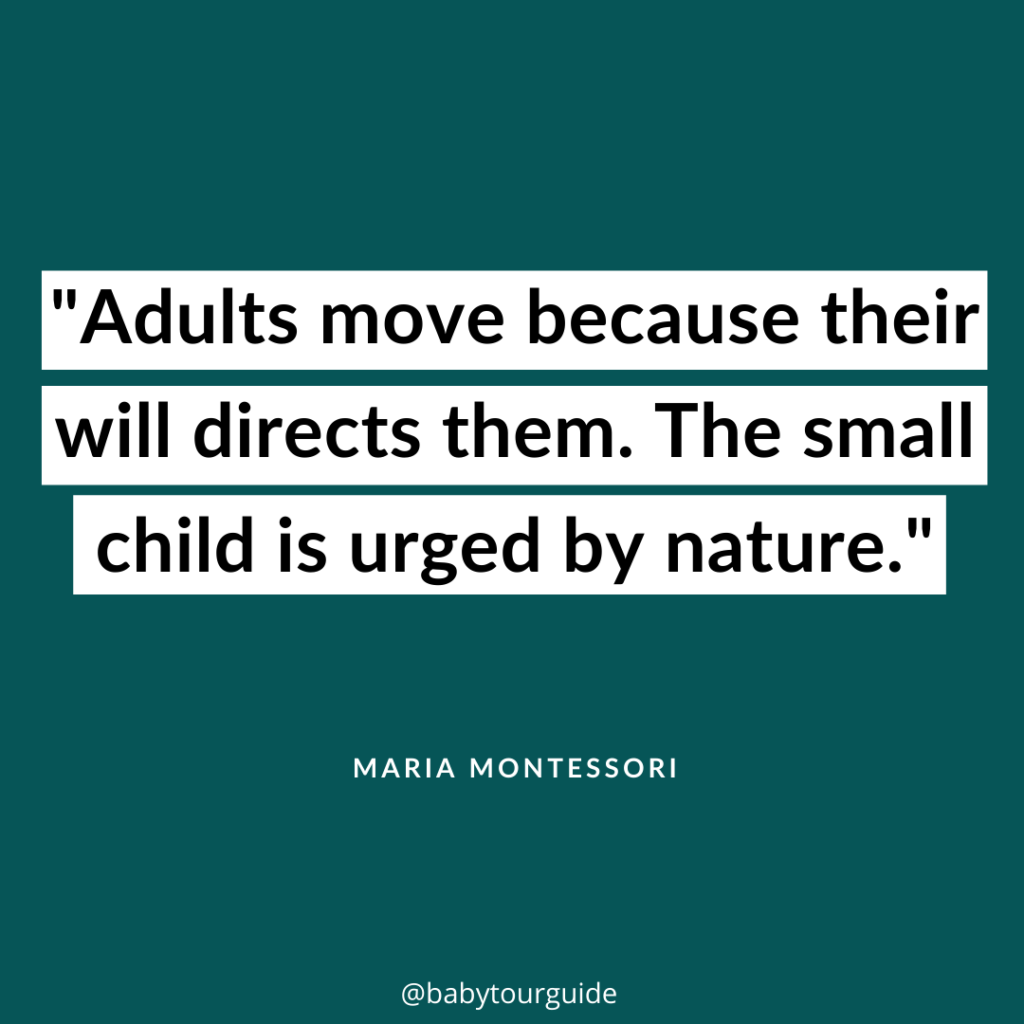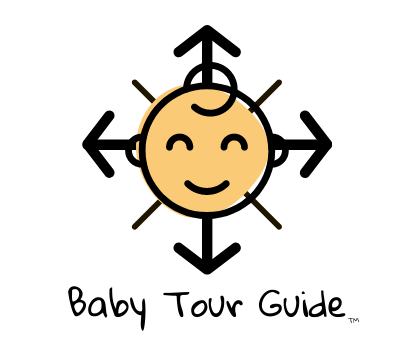Let’s dive into Montessori observation! The reason I want to start here is because Montessori observation is super life changing for your Montessori practice, whether you’re a parent working with your own child, whether you’re an educator working with a group of children, or a caregiver working in the home with siblings.
Observation is such an amazing tool to have in your back pocket. And so I will be touching on why it’s important how we can use it, the types of things we can discover, that kind of thing. If you’ve heard about Montessori or, you know, done your research or even lightly Googled it, you’ve probably heard this term.
And if this is your introduction to Montessori, I’m honored to be the one to tell you all about the glories of Montessori observation! This topic is super prevalent and really lies at the heart of all Montessori. And that’s actually at all age groups within Montessori, not just infancy and toddlerhood, but all age groups.
So to get started with Montessori observation, I figured we would start with my definition.

1. Montessori Observation Defined
Montessori Observation: a tool and a resource that a Montessori guide or parent can use to gain a deeper understanding of what the child needs and/or is driven to within their environment and interactions.
So it’s essentially something that you have in your back pocket to take a step back and look at at things as a whole. Let’s say a child is hitting, for example. If you’re looking at everything, you’re looking at every interaction, every movement to try and understand the child better. And so observation is key to understanding.
2. Benefits to Using Montessori Observation For Yourself
Montessori Observation is really helpful with understanding people in general, but starting with our children. And starting with babies, since they’re not yet verbalizing words, observation is really what we use to understand them!
You’re likely already doing a lot of the observation that we suggest. And so we just kind of formalize it a little bit and then give you some tips and tricks and ideas on how to take a step back within your observation.
Another reason it’s beneficial to infancy is that infancy moves so quickly, so much is happening. You know, within a year, their brain doubles in size. They go from completely non-mobile, blurred vision, reflex type movements, to walking and communicating within a year! It’s it’s it’s crazy how quickly it happens.
And another reason is every child grows at a different pace. Of course there’s a there’s a general timeline of how children grow, but every child grows differently and evolves differently. And so the way that we can best understand this child, the specific child is through that is through observation.
Say you’re observing a child who really drawn to a specific material. There’s likely something within that that they’re drawn to. And you might be able to help kind of foster that innate will and love of learning if you find out what that is and then offer other materials within that same type of or that offers the same type of thing.
And the same goes for when they are misusing materials. Why are they doing that? These are all things that we can find out through the art of observation. And this example perfectly segues into our next topic…

3. Using Montessori Observation to Understand Behaviors
Observation is also amazing to use for behaviors. So things like hitting, biting, hair, pulling, pushing, etc..
So, for example, you may know a child or have a child who say has a tendency to hit. And, you know, while we definitely want to nip that behavior in the bud, we also want to get to the root of that behavior. You know, we want to find out why this child has a tendency to hit or is hitting or what scenarios they’re hitting in. You know, “the why”.
Because that’s in reality, you know, we could sit on the other end of it and always say “that hurts your friends look see their face”. I mean we need to do that because the child needs to understand the effect. But there’s also a reason why this child is doing that.
So it’s in their benefit, if we figure out what that is, so we help them be more settled. So we may ask ourselves something like, “Why is this happening? When does this happen? Are there triggers that make this happen? Is it situational? Can it be prevented? And if so, how?” So you take to the books and you observe, you get out your journal or your notepad or your sticky notes that you have in your pocket and you write stuff down.
4. How To Do Montessori Observations
So here’s the how. Now sticking to that same example of the child who has a tendency to hit, and using observation to seek deeper understanding. You write what you’re seeing, what you have discovered through interactions, personal interactions with them, watching their interactions with others, that kind of thing.
And perhaps you discover that this child is hitting only one around other children. Perhaps it’s his way of protecting his toys or materials from other interested hints. Perhaps, you know, this child began hitting his parents and the child got a really big reaction, maybe something like, “Oh, honey, you know, that really hurts Mommy.” And then Mom spoke to her partner. “Honey, he just hit me. Can you believe that?” And so maybe the child is seeking the same type of reaction after having had one from the initial encounter.
And we’ll talk about behaviors at another point. But hitting at this age it’s never an intentional, like “hit to hurt” kind of thing. There’s always some sort of observational reason why this child is doing said behavior. Perhaps this child is impulsively hitting other kids because the child is used to roughhousing at home with mom or dad. Maybe they pretend rough play and this child goes to school and rough plays with his friends. And the child’s playmates and friends are not used to that. These are all things that we can learn from observation.
5. Recognize Your Biases
Now the biggest tip that I have for you (that has been the biggest driver in my observation taking) is try to understand your own bias and remove it as much as possible within your Montessori observations. As parents and educators and caregivers, we’re always on this journey of trying to continue to evolve and learn about ourselves so we are as in tune and connected as possible.
And knowing your biases is one of the best ways to do that! So, for example, maybe you newly introduced solids to your baby and you started with peas. And your sweet little baby makes a squinty, funny face and spits it out. If we were watching that, it would be super easy to observe and say he tried the food and he didn’t like it. Because what we know as adults is when we don’t like something, we make a scrunchy face or spit it out and push it away.
But babies don’t know what a “normal” face to make is when you don’t like something. And so there are actually a lot of reasons why that baby could have made that face, or spit it out, or pushed it away.
For example, babies have a tongue reflex that pushes their tongue out as they’re initially starting to eat. I’ve seen it with all the babies I’ve worked with who started their weaning journeys and their tongue sticks out and it kind of pushes out the food and it can be easily mistaken for “this child is spitting this out and therefore they don’t like it”.
They also may not have been settled enough in that moment to want to try solid foods. It could have been that they’re not settled because they just made a poop. It could be that it’s a temperature that they’ve never had. Or maybe they actually didn’t like it.
But because there are so many reasons why this child could be making that face and spitting it out, it’s really helpful to remove what conclusion we may think it is and just observe what is happening. The child spit it out. The child pushed it out with their tongue and made a squinty face because the reason behind it could be really anything.
So if we remove that bias from our observations, we open a world of possibility available to the child. And then when we follow the child, we discover the truth behind it. So we end up really learning about each individual child and, you know, the beauties within their uniqueness.
PRO TIP: Make Montessori Observation Work For You
Of course it is wonderful to have a traditional journal where you sit and you observe! But that’s not always doable in all situations. If you’re working one on one with the child all day long, or if you’re at home, or if you’re a nanny, or if you don’t have somebody there with you that can work with the child where you can sit and observe, it may be easier to do something a little less formal.
Perhaps you have sticky notes in your pocket that you pull out with a little pen, where you could just write some stuff down like a little trigger a memory from earlier in the day. And and then write the longer observation down later. Or maybe you record a voice memo!
Essentially as long as you have a way to track and record, you’ll have the tools to gain deeper understandings of how to help the child or children that you’re with.
Finally, I want to end with this quote. I have found it really helpful to understanding why observation is so important.

I think this so beautifully embodies how children are guided. And if we think about it, the main way that we know more about nature as a whole is through observation and through research. And so if we want to learn more about our sweet babies or students, give it a try.
You’re likely already doing some form of this. It’s just kind of talking about it and evolving it. And, you know, I’m on that journey. I think we all are on that evolution of how can we best helping guide the children that we work with and this is just such an amazing tool to be able to do that, and I’m constantly amazed at what I discover through it. And I think that you will be, too.





